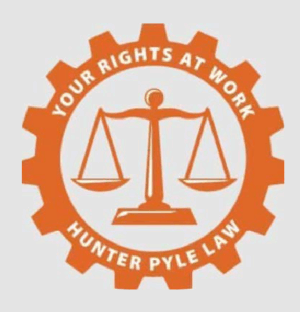Disability Harassment in California — Your Rights at Work

California’s Fair Employment and Housing Act (FEHA) prohibits employers[1] from harassing employees, applicants, unpaid interns, and volunteers because of their “physical disability, mental disability, medical condition, [or] genetic information,” among other things. Gov. Code, § 12940(j)(1). It separately provides that employers are liable when they fail to take all reasonable steps necessary to prevent harassment from occurring. Gov. Code, § 12940(k).
Employers are strictly liable for disability harassment committed by their agents or supervisors.[2] State Dept. of Health Services v. Superior Court (2003) 31 Cal.4th 1026, 1034. Employers may be liable for harassment committed by employees who are not agents or supervisors if the employer, or its agents or supervisors, knows or should have known about the conduct and failed to take “immediate and appropriate corrective action.” Gov. Code, § 12940(j)(1). Employers are also responsible for the acts of nonemployees who engage in disability harassment when the employers, or its agents or supervisors, know or should have known of the conduct and failed to take immediate and appropriate corrective action. Ibid.
Employees who commit disability harassment are personally liable for that harassment. Gov. Code, § 12940(j)(3). Liability on the part of the harasser lies regardless of whether the employer knew or should have known about the conduct. Ibid.
In order to prevail on a claim for disability harassment, a plaintiff must show that the conduct was “severe enough or sufficiently pervasive to alter the conditions of employment and create a work environment that qualifies as hostile or abusive to employees” because of their disability. Hope v. California Youth Authority (2005) 134 Cal.App.4th 577, 588. However, the McDonnell Douglas burden-shifting framework does not apply to such claims because “there is no possible justification for harassment in the workplace.” Phan v. CSK Auto, Inc. (N.D. Cal., Aug. 27, 2012, No. 11-CV-02327 YGR, 2012 WL 3727305, at *10, fn. 11. Therefore, an employer cannot offer a legitimate nondiscriminatory reason for it.
The parameters of a disability harassment claim were explored in Cornell v. Berkeley Tennis Club (2017) 18 Cal.App.5th 908. The plaintiff in that case was a severely obese woman who had worked at the Berkeley Tennis Club for more than 15 years.[3] After she was terminated, she brought suit, including claims for disability harassment based upon comments that had been made about her weight. These comments included the following:
- After the plaintiff indicated that it might be a problem to get a properly sized uniform for her because she shopped in specialty stores, the club’s general manager responded by laughing and mockingly saying, “Oh yeah, that’s right.”
- In November 2012, the club’s general manager asked the plaintiff whether she had thought about having weight-loss surgery.
- The plaintiff heard the general manager tell the kitchen staff on one occasion not to give her extra food because she did not need it.
In addition, the plaintiff alleged that the defendant had ordered shirts that were too small for her and then disciplined her for resisting the uniform policy. She further alleged that she was paid less than other employees and denied extra hours and other positions within the company.
The trial court granted summary adjudication of the plaintiffs’ claim for disability harassment, among other claims. On appeal, the First District Court of Appeal reversed, finding that there was a triable issue of material fact as to the cause of action for disability harassment. The court noted that the comments mentioned above were not sufficiently severe nor sufficiently pervasive enough to support a FEHA harassment claim. However, viewed in context with other actions taken by the club, and while it was a “close call,” there was sufficient evidence to reverse the grant of summary adjudication. 18 Cal.App.5th at 940–941.
Furthermore, and in addition to prohibiting disability-based harassment, the FEHA also prohibits harassment based upon associating with individuals with a disability. See Govt. Code section 12926(o).[4] That was the conclusion in the unreported decision of O’brien v. California Department of Corrections and Rehabilitation (Cal. Ct. App., May 10, 2021) 2021 A.D. Cases 172611. In O’brien, the court considered the type of association necessary to support such a claim and declined to limit it to situations in which the plaintiff had a personal relationship with the disabled individual.
The attorneys at Hunter Pyle Law have handled a wide variety of disability-related cases. If you think your employer may have violated your rights, please feel free to contact us at (510) 444-4400, or at inquire@hunterpylelaw.com.
[1] Government Code section 12940(j)(4)(A) provides that for purposes of section 12940(j) only, “employer” means any person regularly employing one or more persons or regularly receiving the services of one or more persons providing services pursuant to a contract, or any person acting as an agent of an employer, directly or indirectly, the state, or any political or civil subdivision of the state, and cities. However, the term “employer” does not include a religious association or corporation not organized for private profit, except as provided in Government Code section 12926.2.
[2] State Dept. of Health Services further held that the avoidable consequences doctrine applies to damage claims under the FEHA. 31 Cal.4th at 1034. Under that doctrine plaintiffs are unable to recover damages that the plaintiff could have avoided with reasonable effort and without undue risk, expense, or humiliation. Ibid.
[3] The opinion notes that the plaintiff’s weight interfered with several daily life functions, including bathing, walking, and using transportation. Furthermore, she was unable stand for more than an hour, could not walk more than a mile at a time, and often experienced significant shortness of breath from engaging in basic activities. Cornell v. Berkeley Tennis Club (2017) 18 Cal.App.5th 908, 919.
[4] Government Code section 12926(o) provides in relevant part as follows: “’[P]hysical disability, mental disability’…includes a perception that the person is associated with a person who has, or is perceived to have, any of those characteristics.”


